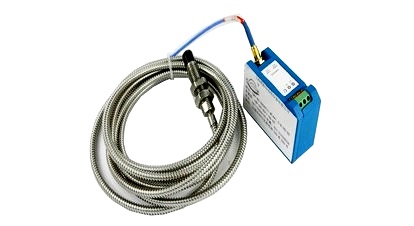Gap voltage (VDC) is a direct representation of distance between the probe’s tip and the shaft’s surface. This is the quiescent voltage that needs to be adjusted between the proximitor’s output voltage range limits.
Any vibration of the shaft will cause the proximitor’s output voltage to vary in precise step.
Vibration Probe Gap Voltage

Gap voltage of Bently Nevada vibration probe is usually set at -10V. Reason for setting at -10 volt is as we know, proximitor allows probe to work from -2 volt to -18 volt.
So voltage difference of 2 to 10 and 10 to 18 is 8 volt. When setting at -10 volt, probe can equally measures vibration at both sides (I mean when shaft is going away from probe or towards probe).
Suppose we adjust probe at -9 volt. Probe can detect vibration?
Yes, it can can detect vibration but its one side will be margin of 7 volt and other side margin of 11 volt.
At 11 volt margin, probe will detect vibration excellent but at other side,7 volt side, it has limitation, when more vibration it may not detect.
(Old system, when proximitor supply was 18 volt, setting were at -8 volt, now such proximitor almost obsoleted)

